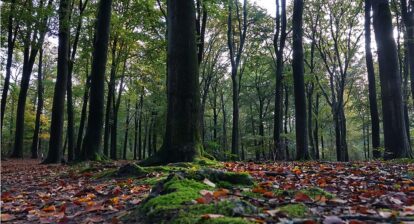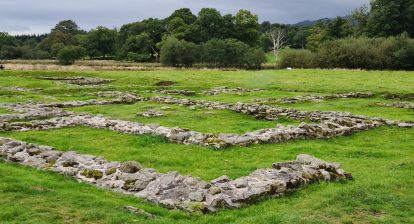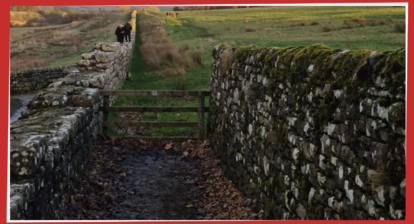Ambleside Roman Fort
Transcript/Blogpost
On the way back from the Lake District last weekend, I stopped by at Borrans Field in Ambleside to see the Ambleside Roman Fort, at the northern end of Lake Windermere. It was really amazing. Roman remains in the middle of a town bustling with tourists.
The Ambleside Roman Fort covers approximately three acres and was probably built at the time of Roman Emperor Hadrian in 117-138 AD. He’s the one who built Hadrian’s Wall that separated Roman controlled England from Scotland. Excavations have also shown the presence of an earlier turf and timber fort beneath the visible stone buildings. That one was probably set up around the 90s AD, when the Romans were consolidating their control over the Lake District. Very little is known of this stone fort. A tombstone of Flavius Romanus was found in the 1960s, stating that he was killed by an enemy inside the fort. No one knows who this enemy was.
According to excavations, the fort was occupied into the late fourth century and perhaps even afterwards. According to English Heritage, perhaps it became the base for a local warlord and his militia after the Romans left Britannia. Another theory suggests that it supplied Roman troops, who policed the Lake District, because its close location to Windermere Lake made it suitable to receive goods transported by ship. The large size of the granaries and the settlement outside the fort, which extended at least 800 metres, support this theory.
The main entrance or Porta Praetoria is through the east gate that sported a double carriageway (the via Praetoria) and guard towers. The via Praetoria led straight to the headquarter’s bulding. According to English Heritage: “In very dry weather, the line of the Roman road approaching the gate can be clearly seen as a crop-mark in the grass.” There were three other gates into the building which had only single doors. The whole stone fort was built with rounded corners, each of which had a small tower to provide views over the lake and the surrounding countryside. The towers provided access to a walkway that ran inside and around the top of the wall. One can see the gates and sections of the fort even today.
Further on are the amazing stone structures that used to be the headquarters and the granaries. The headquarters consisted of a courtyard, surrounded by rooms beyond which was a ‘cross-hall’ – a roofed extension of the courtyard and the fort’s administration centre. At the back was a small temple which also housed the military standards, and underneath the temple was a sunken treasury to keep the garrison’s funds and soldiers’ savings. There were more administrative offices on either side of the temple.
Outside to the right of the HQ are the remains of two large granaries, suggesting that this fort may have served as the storage and distribution centre for the region. The floor of the granaries was made of raised flagstones on supporting walls to allow air to circulate through vents in the outer walls. To the left of the HQ was the commander’s residence with at least 12 rooms around a courtyard. The areas to the front and back of these main buildings probably had soldiers’ barracks and stables.
The Romans first officially arrived in Britain in 43 AD, when Claudius was emperor. After subduing and befriending various local tribes they ruled the province of Britannia directly till 410 AD. Forts like these are a testament to their rule.
I hope you enjoy the post and video. You can subscribe to the You Tube Channel for more on science, history and nature and please do check out the website and follow on social media: Twitter // Instagram // Facebook // Reddit. You can check out the audio podcast on: Apple Podcasts // Stitcher // TuneIn // Spotify Title music: Hovering Thoughts by Spence (YouTube Music Archive)
All images and videos: Copyright 360onhistory.com Information: English Heritage. I hope you enjoy the post and video. You can subscribe to the You Tube Channel for more on science, history and nature and please do check out the website and follow on social media: Twitter // Instagram // Facebook // Reddit. You can check out the audio podcast on: Apple Podcasts // Stitcher // TuneIn // Spotify Title music: Hovering Thoughts by Spence (YouTube Music Archive)






